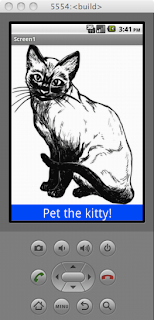One of the most thought-provoking and inspiring activities of my summer has been participating in the
Level Up Book Club organized online by librarians
Jennifer LaGarde and
Matthew Winner. Our first book of the summer is
Reality is Broken: Why Games Make Us Better and How They Can Change the World by Jane McGonigal. Within the first few chapters I felt very strongly that this is a book all my teaching colleagues should read. Why?
To understand our students better
We can’t teach our students if we don’t know them, right? And a big part of our students’ lives are the games they play. As McGonigal explains, we have a societal bias against games, thinking that they are a trivial waste of time. She argues strongly that we need to overcome this bias because games are extremely effective at helping us meet our most basic human needs and provide a guide for how other aspects of our lives could be more meaningful. We need to recognize that there is a reason our students love the games they play and to respect this important part of their lives outside of school. McGonigal shares several examples of popular games and helps us understand what our students are getting out of these games.
To start thinking about how game design could enrich learning
Games are incredibly engaging. Contrast the addictiveness of Minecraft amongst our students with the boredom even our best students feel in school at times. According to McGonigal, games provide challenge, meaningful work, a sense of accomplishment, and social connections. They motivate us by providing a real sense of optimism about our ability to succeed. And when we fail at a game, it just inspires us to try again and try harder this time. These are all things that we want to increase at school. Learning more about how games give us motivation, challenge, satisfaction, confidence, and perseverance will help us design better learning opportunities for our students.
To help us do new things in new ways
Technology is increasingly available in the educational realm, but just turning a worksheet into a pdf or a lecture into a Keynote or PowerPoint presentation does not improve learning. We need to break out of our old habits to take full advantage of how technology can enrich student learning. Good game design offers clear goals, immediate feedback, and choice. Those design elements could guide us in how to use technology to create new, more powerful learning activities.
A guild is stronger than an individual
Our book club’s discussions have generated a lot of exciting ideas that I want to implement at my school. I keep thinking how powerful this book could be if my local colleagues read it, too. Incorporating game design into education is a new way of thinking for many of us. Such a challenge is best met by a party of willing adventurers.
For more information about Reality is Broken, visit
Jane McGonigal’s web site which includes related videos, reviews, and ordering information.






